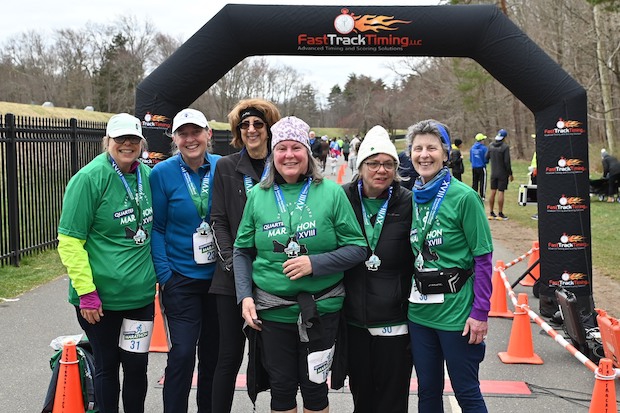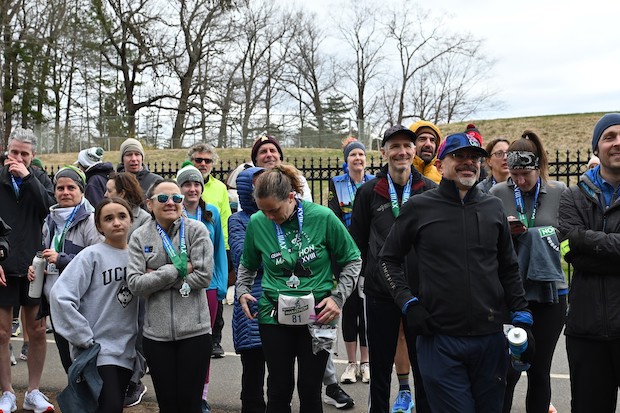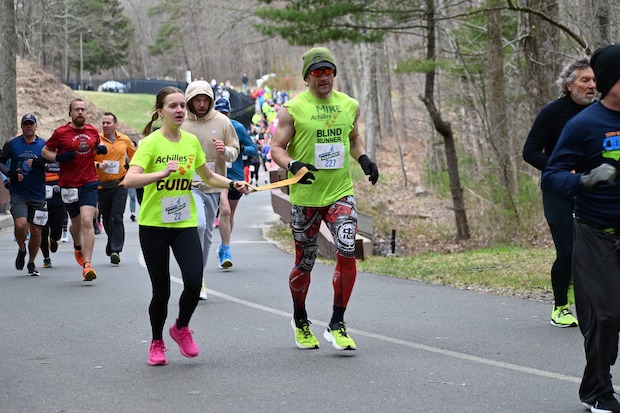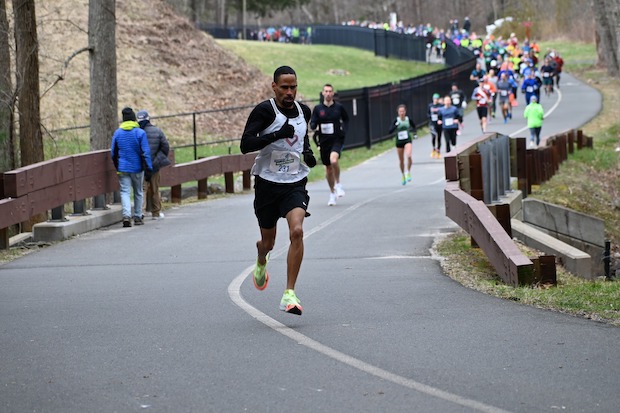Saying Goodbye to a Race

For the last few years, I’ve written about a spring race that Kelly (my wife) and I have race-directed, the Greater Hartford Quarter Marathon. Kelly kickstarted this event nearly two decades ago, and we’ve run it together for almost the last ten years. We’ve seen pretty much everything early April in Connecticut could throw you — snow, sleet, freezing rain, rain, a nearly 60 degree temperature range, and it’s always windy. Then, of course, this was the first race we were forced to cancel due to the COVID pandemic — and all the fun that it brought (including accusations of “stealing people’s money” by pivoting to a virtual event).
It’s all brought us to this — we’ve decided to retire the event after this year’s running. There’s no one particular reason that stands out as why; it’s more of a death by a thousand paper cuts. Here are a few of them.
Runner Behavior Has Changed Significantly Post COVID

The COVID-19 pandemic changed us all in a variety of ways. Arguably the biggest change for the collective running and multisport landscape has been race entry purchasing behavior. With extremely few exceptions, most athletes are delaying race entry later and later. It’s understandable given the number of people who felt burned by a sea of deferrals and the inability for most race directors to refund entry fees. We definitely were included in that bucket — for this race, in particular, canceling the race less than two weeks before the event in 2020 meant everything had been paid for, or was contractually obligated to be paid for.
In response, runners and triathletes delay entering races until the last 30 days before the event. It makes it extremely hard to forecast participation levels, meaning that it’s also hard to justify figures needed for food, swag, port-o-johns, and even your timer. And in a world where you pay on a per bib basis, every bib that goes unused is just money wasted. For those of us operating on a purely volunteer basis, it adds some significant heartburn to an already stressful endeavor.
The Lessening Impact of Charity

Or, as I like to call it, charitable burnout. It used to feel like a big deal to choose a race that would be benefitting a specific charitable partner (for this event, that’s Achilles International’s Connecticut chapter). It always seemed important in all of our post-race surveys.
But, particularly since 2020, the intensity of that importance has diminished. And that’s not just for our races. It’s been harder and harder for anyone and everyone to recruit volunteers, to the point where you’re seeing fewer aid stations on courses due to the reduction in volunteers. What the money goes to — whether a for-profit race director or a charitable partner — seems less important to the race experience delivered — which ties into the next point.
The Increased Cost of Race Experience
Inflation is real. It was true prior to the pandemic, but it’s definitely accelerated over the last few years. Example: it now costs more for 300 screen printed shirts today than it did for 550 of them in 2017. The per shirt cost — before you even factor in printing — has doubled over that time. Food, port-o-johns, timing, bibs, medals, storage for all your materials, replacing any equipment that breaks — it’s all significantly more expensive.
And, well, there’s only two ways to offset those kinds of increases: either you deliver less, or you increase prices.
We have traditionally tried to operate our races in a niche where we were able to deliver a big-race experience — personalized bibs, quality swag, excellent post-race food — on a shoestring budget, undercutting larger race competitors on entries by $10-$20, all while delivering a check ranging from $4,000 to $10,000 to our charities. That’s simply not possible in 2024. If you want to deliver that experience for people, it’s going to cost them the same amount as racing for a larger production company’s event. And, well, when given the option of paying $80 for a half marathon with 350 people in it, or $80 for a half marathon with 3,500 people in it…you get the picture. Most people are picking the larger event. And that’s OK!
It just means that the likely hole in the market is going to be the purely grassroots event — not much more than a safe course and a bib, and keep costs to an absolute bare minimum. That’s just not an event we’re interested in producing.
Race Directing This Race Doesn’t Fit Our Lives

Kelly and I work a lot. Our estimate is that she worked somewhere north of 3,500 hours last year at her “day” job, spent nearly 100 nights in various Marriott properties, and went from zero to near Platinum status on Delta. Then there’s my mishmash of projects, including but not limited to my Slowtwitch hat. We’ve got a very, very busy seven year old who needs frequent shuttling from skiing or swimming or, as I write this, about to go from circus back home after a full day at school.
Race directing takes its toll, too. Quarter Marathon was always supposed to retire when we moved from Connecticut to New Hampshire in 2018. And, uh…well, we just kept doing it. That was because we loved putting on this race, and it’s also in part because that’s just what we do. But when we looked at our schedules, we realized that Quarter fell in the wrong time of year for us — lots of planning when at least one of us are at the mountain with Ivy every single weekend and holiday break for her ski race team, last minute baking while both of us on deadline for work projects, and still needing to also plan for the youth triathlon that we produce closer to home in June. (Which reminds me, there’s stuff to do there, too.)
The sum of it meant something needed to give. As we put it in our emails to runners pre-race, Quarter Marathon’s all grown up. Time for it to go off to college, and explore new things.
But, to borrow from our old race shirt, you really should have tried other distances. At least, while you still could.
All Photos: Kelly Burns Gallagher




Start the discussion at forum.slowtwitch.com